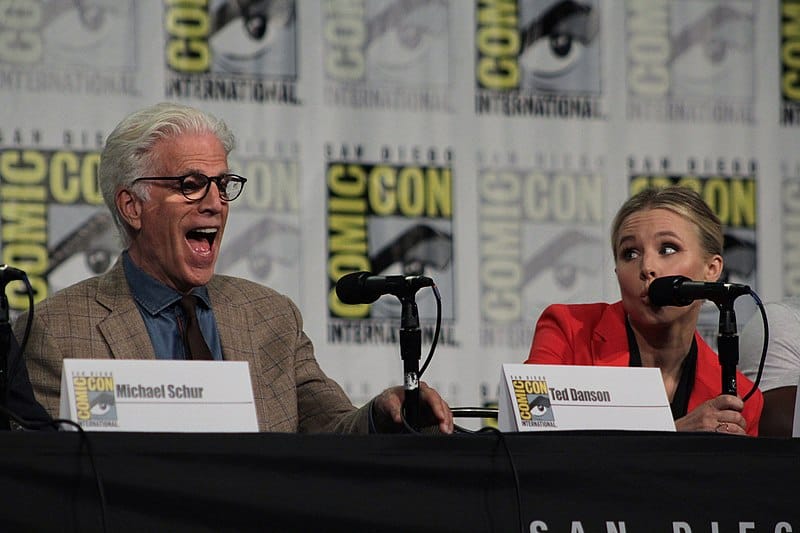Series Review: Why “The Good Place” is the best sitcom on TV
February 1, 2019
Most shows, and especially most half-hour sitcoms on network TV can be summed up in a few words. “Superstore” is a workplace comedy set entirely within the confines of a big-box store, “Brooklyn Nine-Nine” is a workplace comedy about a team of Brooklyn detectives. But “The Good Place?” The third season finale of the NBC show sets up something like the seventh or eighth concept for the show, in just 39 episodes.
We remember sitcoms by their setup. You can tune into any episode of “Parks and Rec” or “The Simpsons” or “Seinfeld” and know what the deal is, regardless of whatever storylines are winding their way through the show at the time. These things spin on for seasons after seasons, comforting us with their return to the status quo. Nothing ever changes, because the comedy is in the situation. But “The Good Place,” a show about a bad person who ends up in a version of heaven, manages to reset its storyline every few episodes, moving the characters from one version of reality to the other, undoing entire seasons and crafting new worlds for the characters to play in.
And yet, somehow, despite reboots and callbacks and ultra-serialized storytelling, “The Good Place” is the best sitcom on TV, and I’m certain it will keep being the best next season, too.
But the way the show reinvents itself is not what makes it so heavenly – no, it’s the things that stay the same. You know that no matter what version of the characters you are going to see, what dimensions they visit or what new tortures are handed down to them, you are going to get Kristen Bell’s Eleanor and William Jackson Harper’s Chidi and, of course, Ted Danson’s Michael being the same core characters they’ve been since the very first episode.
It usually takes two or three seasons for characters to develop into the versions of them we recall, but the characters on “The Good Place” have been flawed and broken and perfectly funny since the second they were first introduced.
The show has everything: great actors, fantastic writing, perfectly realized characters, heartbreaking romances and, almost without fail, jaw-dropping cliffhangers week after week.
“The Good Place” is the TV-show version of eating popcorn, these little 20-minute breaks of joy that take you away into a world that is simultaneously extremely complicated and joyfully simple to look at, all broad swaths of pleasing colors and sweetly-tinkling music. Once you start watching, you won’t be able to stop eating the popcorn, one kernel of an episode at a time, until the bag is empty.
“The Good Place” proves that the 20-minute network comedy is far from being stale. The show is sort of the natural progression of creator Michael Schur’s TV career, from “The Office” to the decidedly more optimistic shows of “Parks and Rec,” and “Brooklyn Nine-Nine,” “The Good Place” follows in the tradition of those shows, with great casts and serialized storytelling, but it innovates in its singular artistic vision.
The show simply looks striking; all the choices, from dialogue to set design, are made with such care. Everything feels cohesive, and there are few, if any, less-than episodes. Everything matters on “The Good Place.” The future of these comedies, I hope, is this kind of unity of theme and storytelling and design.
Thank goodness there is a companion podcast for the long months between now and Season Four.










